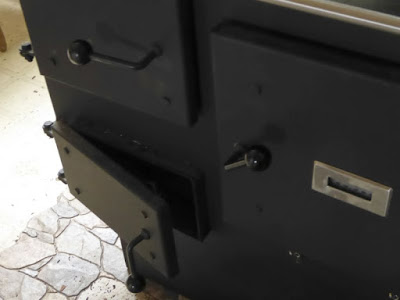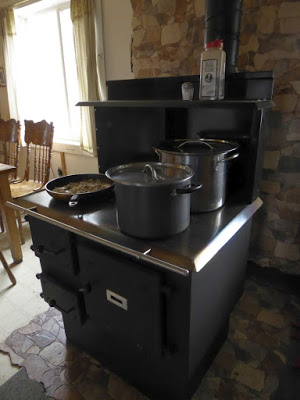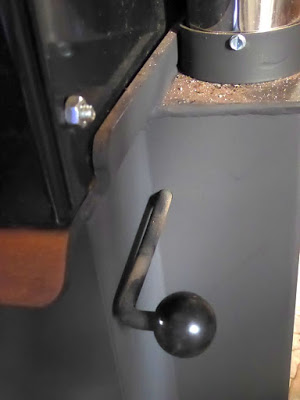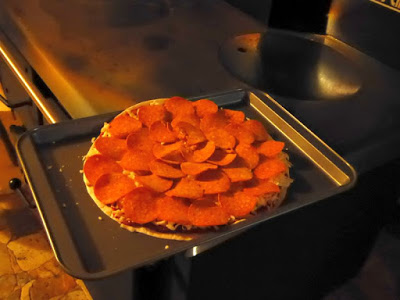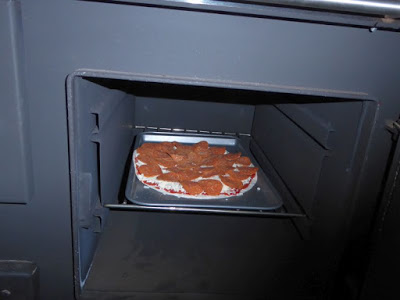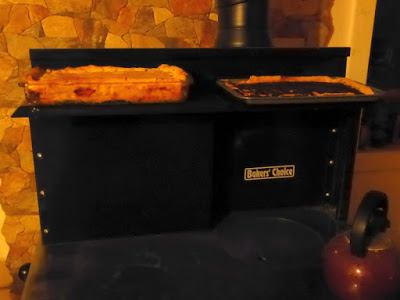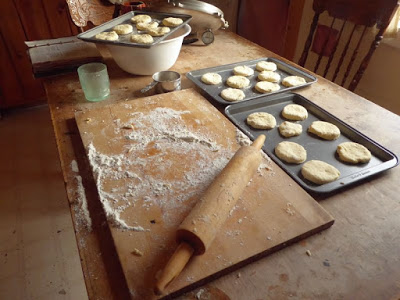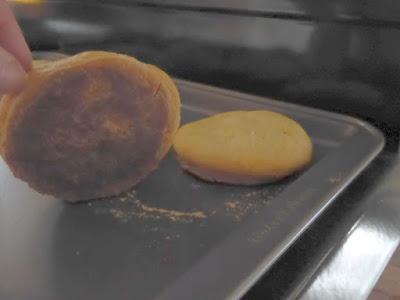| Online: | |
| Visits: | |
| Stories: |

| Story Views | |
| Now: | |
| Last Hour: | |
| Last 24 Hours: | |
| Total: | |
I just LOVE modern technology
I am happily learning the art of woodstove cookery with our new Baker’s Choice wood cookstove. I think I’m in love.
So far this stove is amazing. It heats the whole house and — get this — uses half the wood our old antique parlor stove used. As far as I’m concerned, that in itself will pay for itself.
We’re also using less propane since we’re not using our propane stove as much. Since the wood cookstove is already heated anyway, we simply use it for cooking and baking.
Being air-tight, the stove has a number of features letting us adjust things as necessary. There are two knobs on the side which, when screwed closed, buttons things up for long-term slow heating (Don sets these before going to bed at night so the house is cozy warm in the morning when I get up).
In theory opening these knobs allows more air to flow and makes for a hotter fire, but we’ve learned this lower door, where the ash tray can be found, works better. (We empty the ash tray about every three days.)
When we want a slow steady fire, the door stays closed. When we want a faster, hotter fire, we open the door a bit, which allows air into the fire box and really gets things rippin’.
Using the stove’s surface is simple.
However I hadn’t used the oven, and needed to start figuring that out.
There is a knob in back to circulate hot air around the oven box. The knob goes IN when the oven is in use (our mnemonic memory aid: OV-IN — oven — get it?), which diverts heat around the oven box before it goes up the stove pipe.
The oven has a thermometer, but so far — and granted my experience is limited — I’m learning it really isn’t important (to an extent) what the temperature is.
My first baking attempt was a simple tortilla pizza. I put it on a cookie sheet…
…and tucked it into the stove. I didn’t know how fast it would cook. I didn’t know if I should rotate the tray to prevent one side from burning.
It cooked a bit slower then a regular oven, but I didn’t have to rotate it at all. And it came out beautifully browned all over.
In a conventional oven, particularly for some fussy short-bake foods such as cookies, temperature and timing are critical. One thing I quickly realized is this: time has no meaning to a cookstove. When it says on the recipe that such-and-such should be baked at 375F for 12 minutes, that doesn’t apply to a cookstove, even those with temperature gauges.
For example, I wanted to bake a large chicken pot pie for our neighborhood potluck. Just in case, I put the pie in early — around 2 pm (dinner is at 6 pm) so if it was still half-raw by, say, 5 pm, then I still had time to bake it in our conventional propane oven. We didn’t stoke up the fire any more than normal; we just let the pie bake at its own pace.
As it turns out, it was done by 5 pm. Not just done, but beautifully done. The crust edges didn’t burn (something I normally need to watch for in the regular oven), and it was an overall golden-brown.
I was then tasked with keeping the pie warm until dinnertime. But this wonderful cookstove takes care of that. I simply put it on the warming shelf, and it stayed hot until dinnertime.
Cookstoves call for thinking ahead. Some of our potluck guests like a cup of coffee after dinner. I put the full teakettle on the stove — farthest from the heat source — just as people started arriving. By the time dessert rolled around, the kettle was hot. Alternately, of course, I could have opened the damper and fired up the cookstove hotter, but the room was already warm and I didn’t want to make anyone uncomfortably hot.
This morning I made biscuits for breakfast.
The cookstove oven is small and only has one wire shelf. I have three small cookie sheets that fit in the oven. I put one on the shelf, one on the oven bottom, and one stayed out until the other biscuits were baked.
I didn’t fire up the stove any more than usual, so the biscuits took about half an hour to bake. The sheet of biscuits that fit on the wire shelf baked beautifully.
The sheet that I placed on the oven bottom caused the biscuits to get a bit too brown on the bottom. We ate them and they tasted fine, but I should have been more vigilant.
The third sheet of biscuits — well, I slipped them into the oven (on the wire shelf) and then clean forgot about them. Can’t blame the stove for this; it’s what is euphemistically referred to as “operator error” (otherwise known as a “learning curve”).
I was enthusing to my brother about the joys of this new stove, expounding on its efficiency and utility. “I just LOVE modern technology!” I told him.
It might sound silly to refer to a wood cookstove as “modern technology,” but there you go. My statement stands.
Source: http://www.rural-revolution.com/2015/12/i-just-love-modern-technology.html





